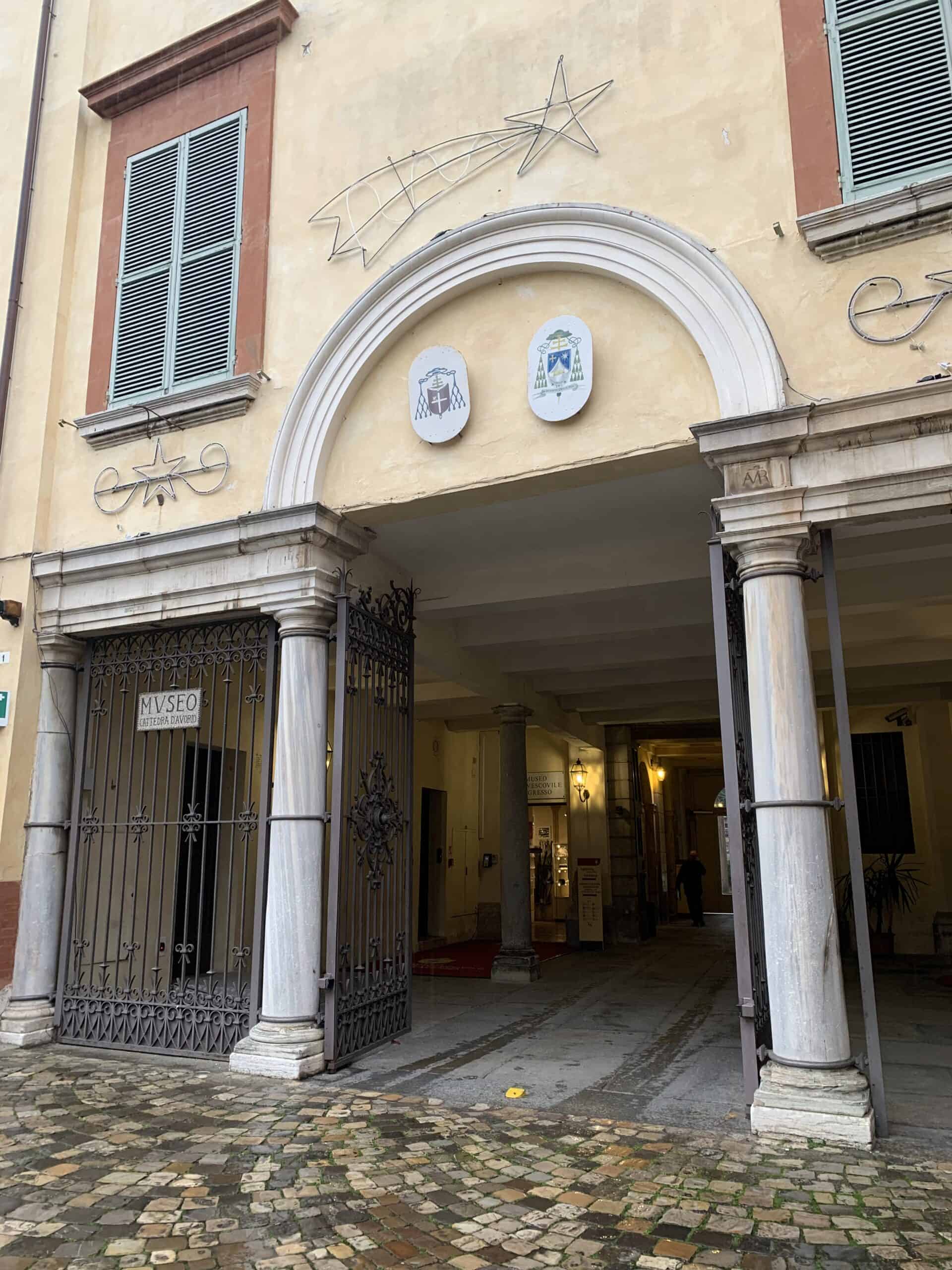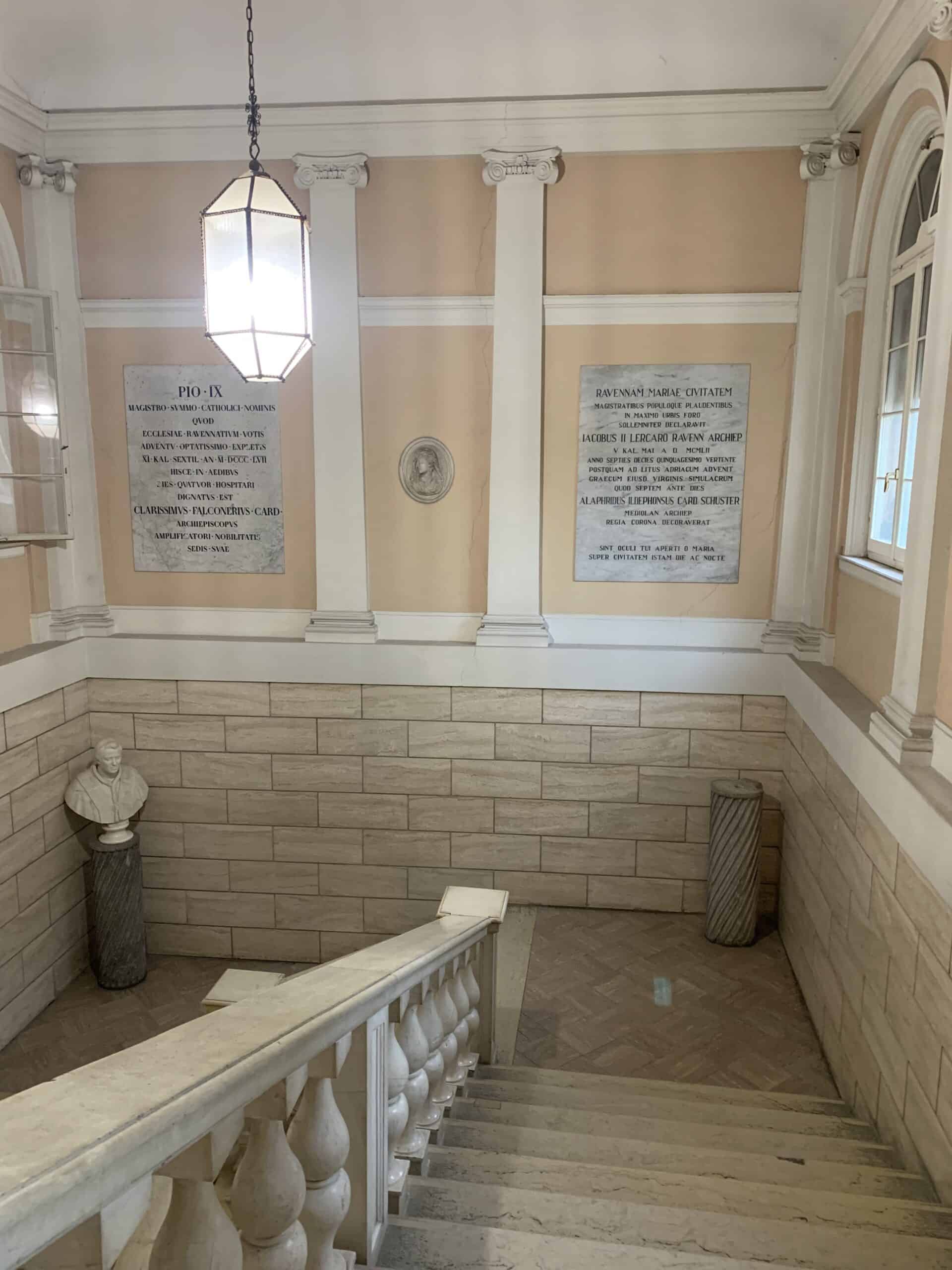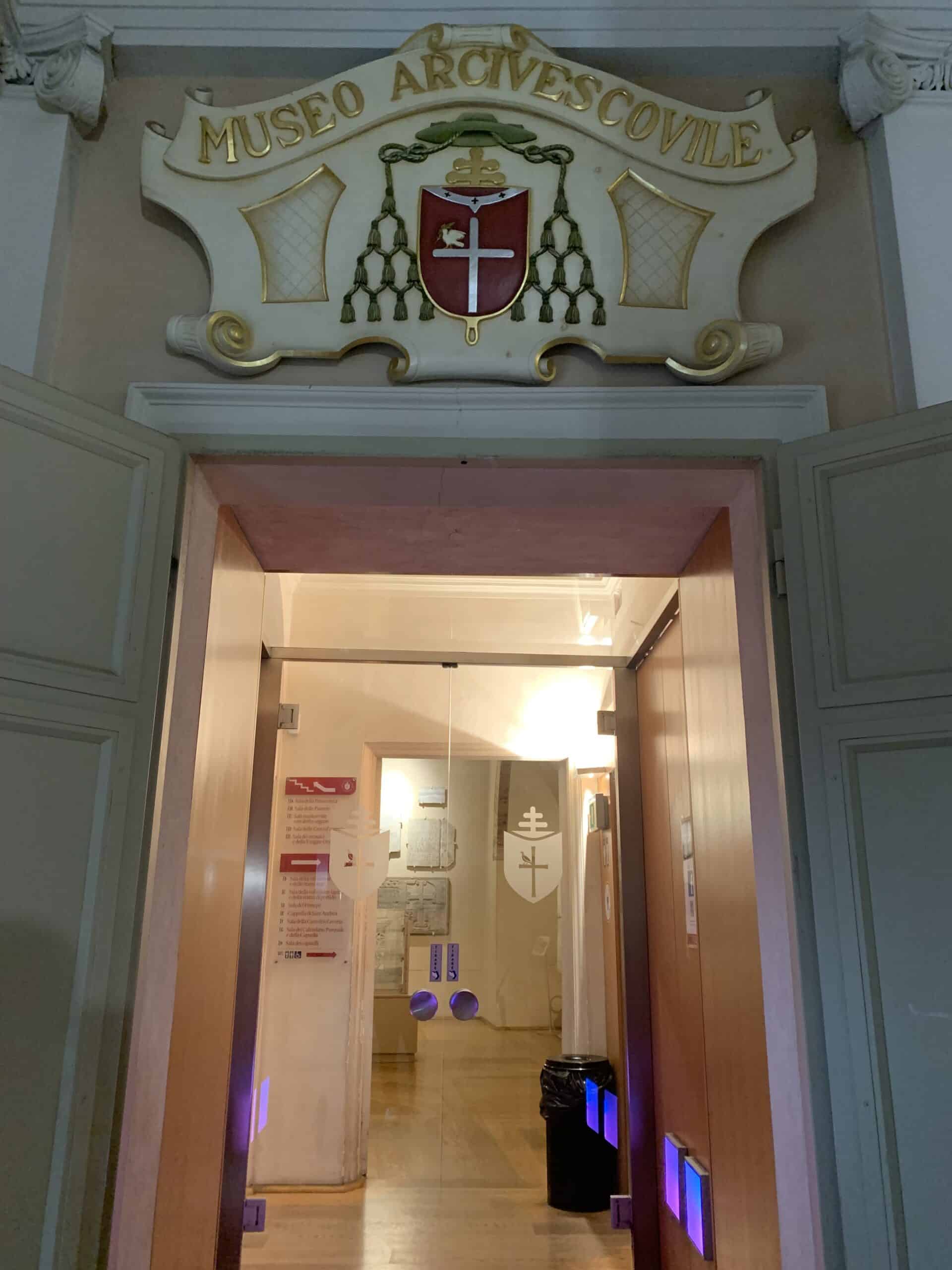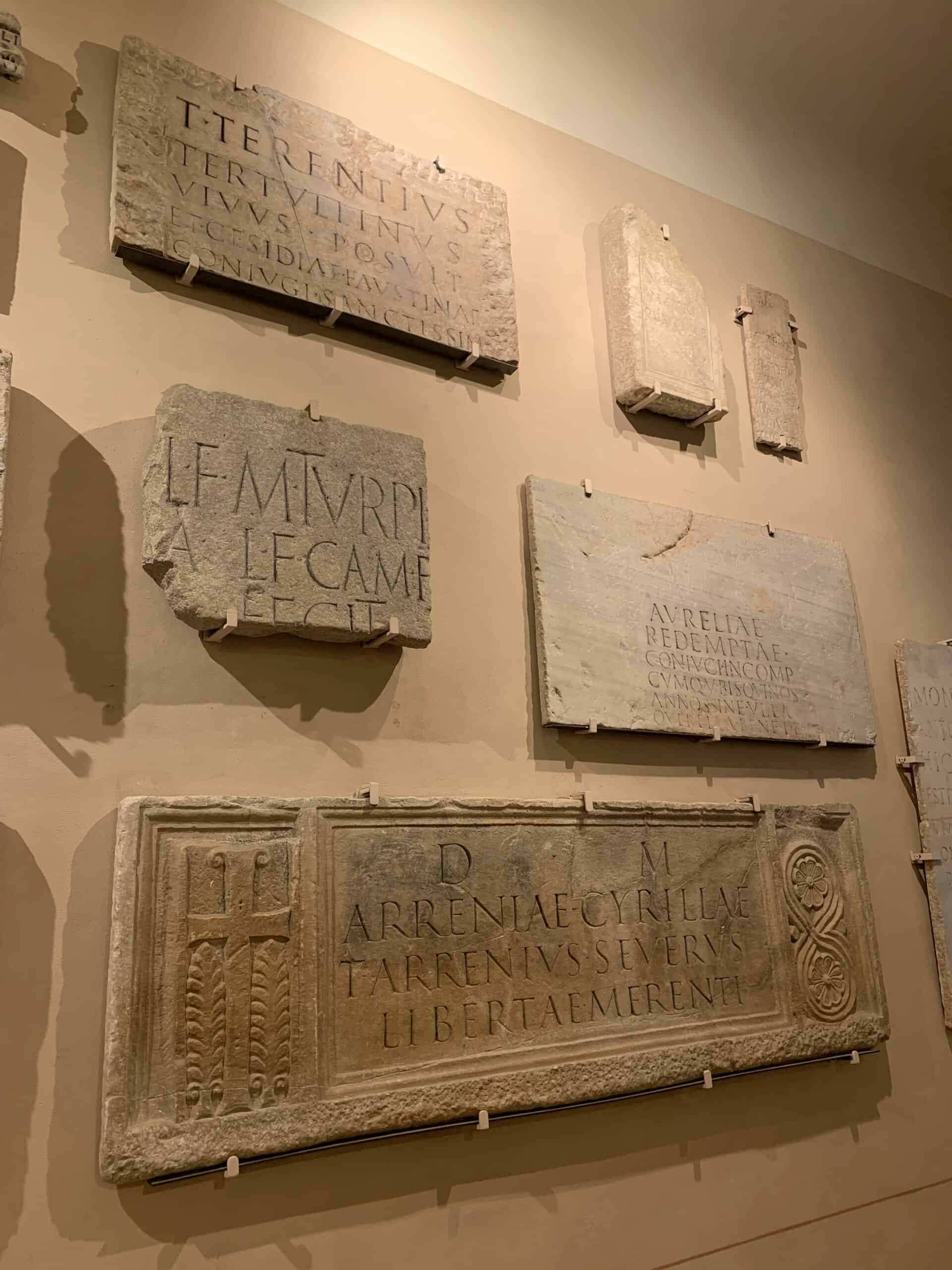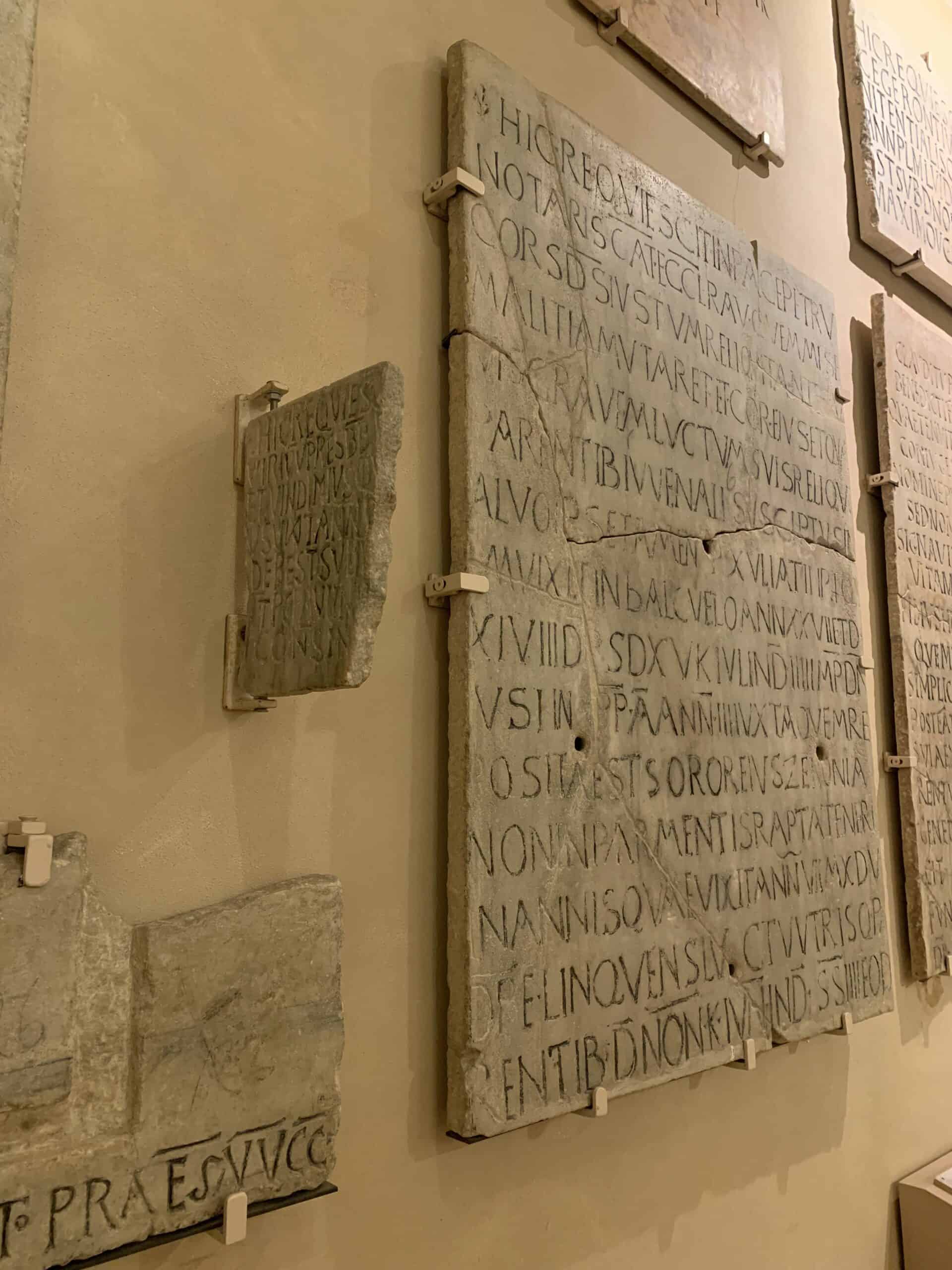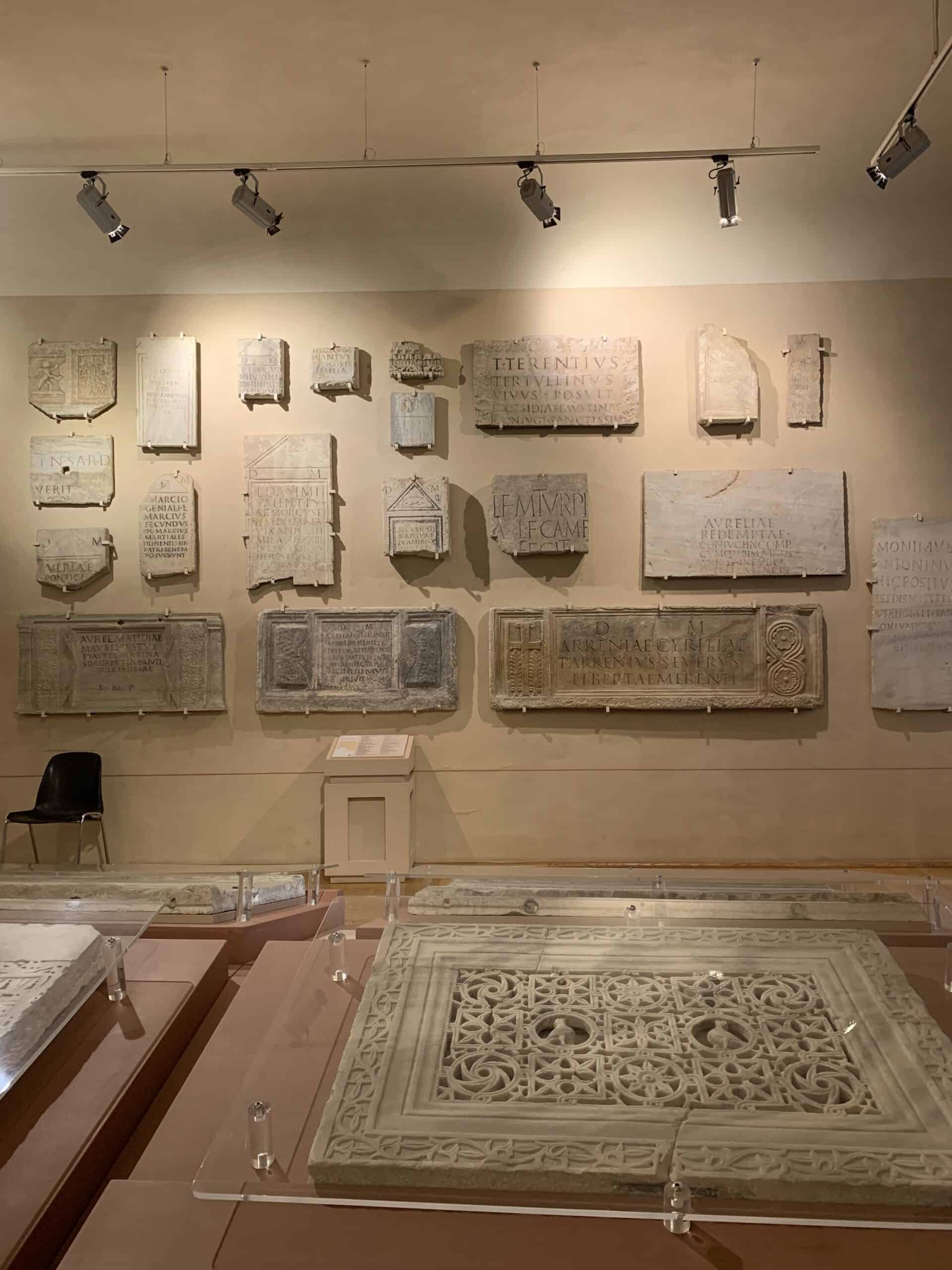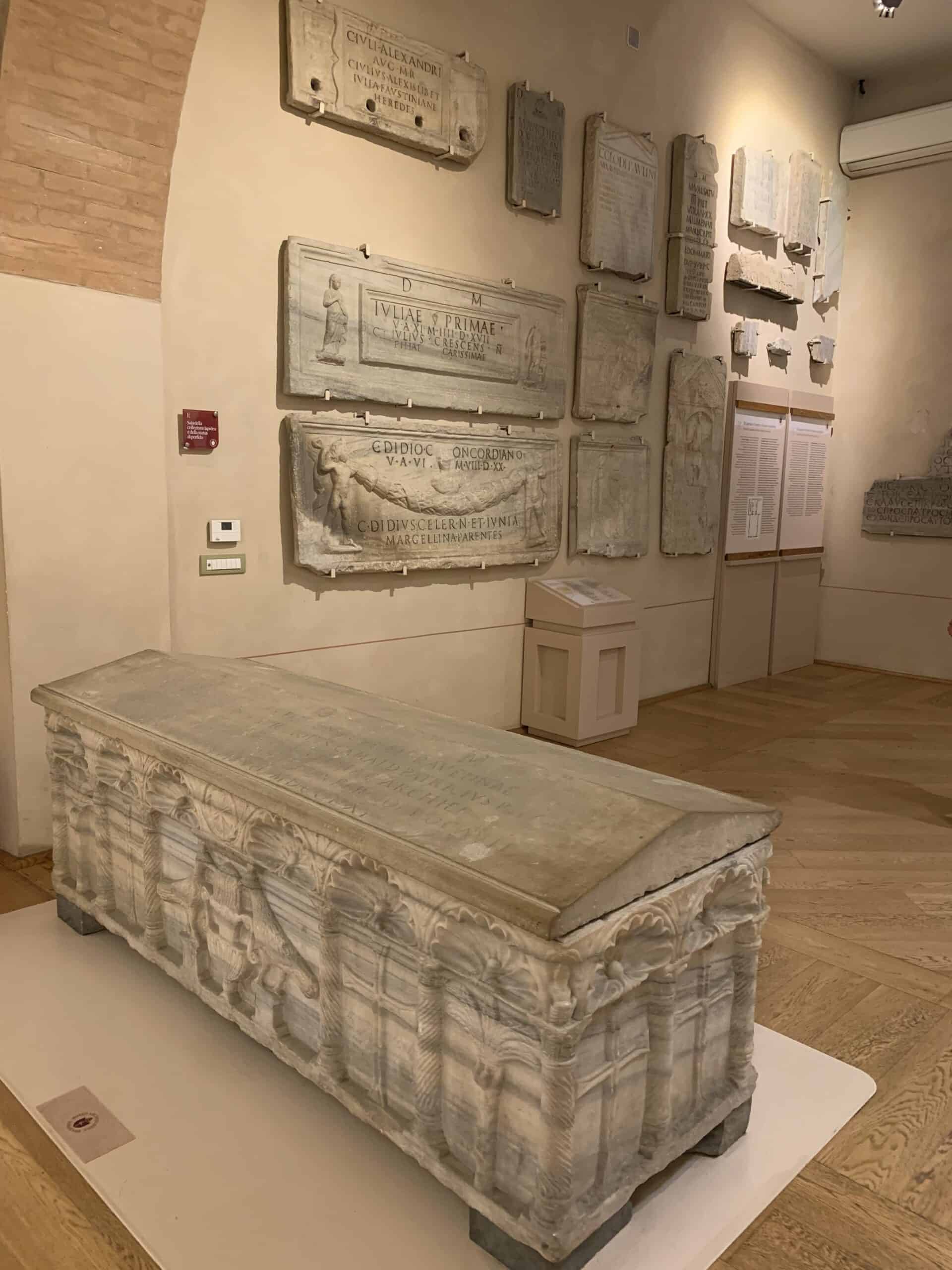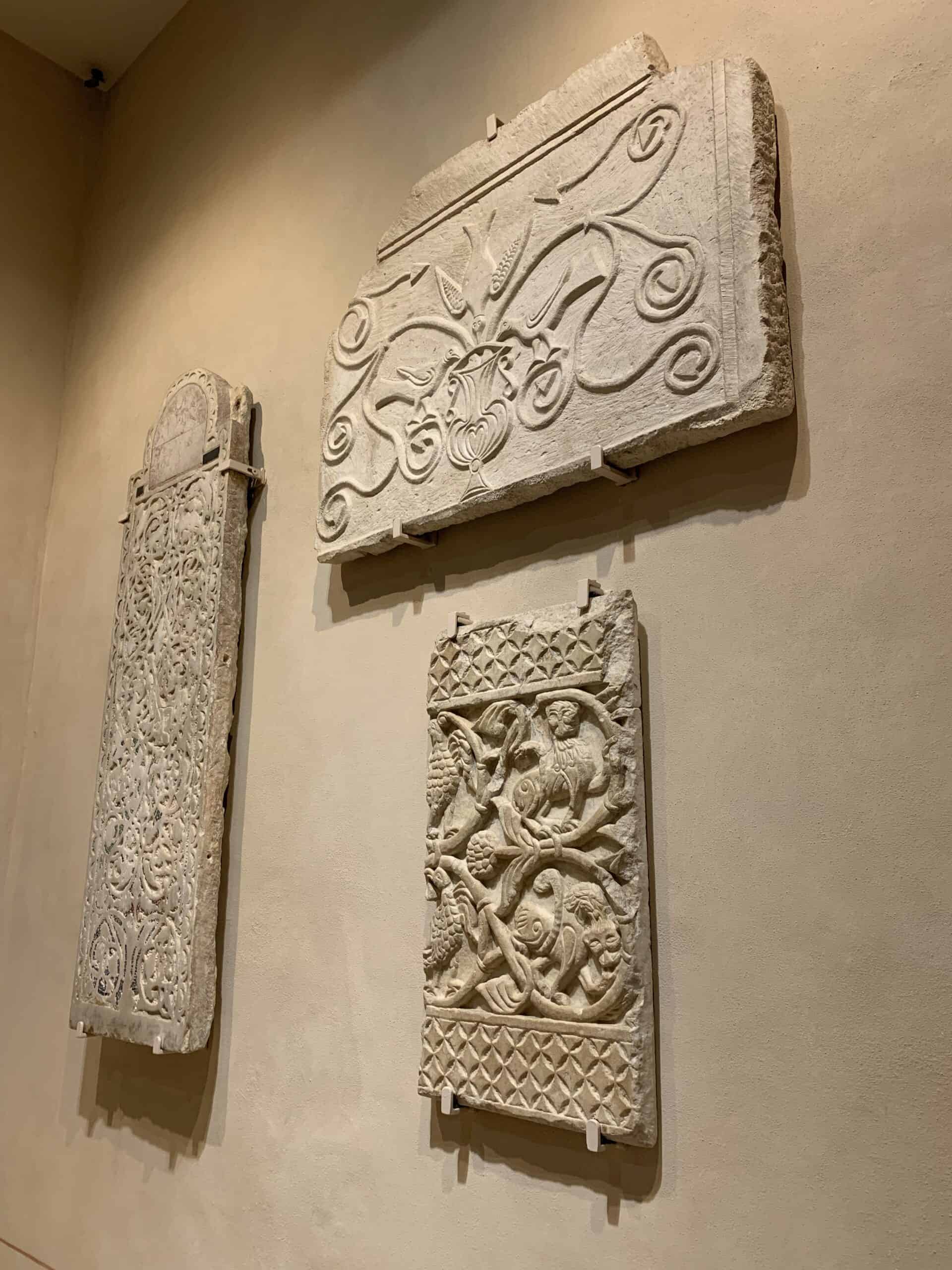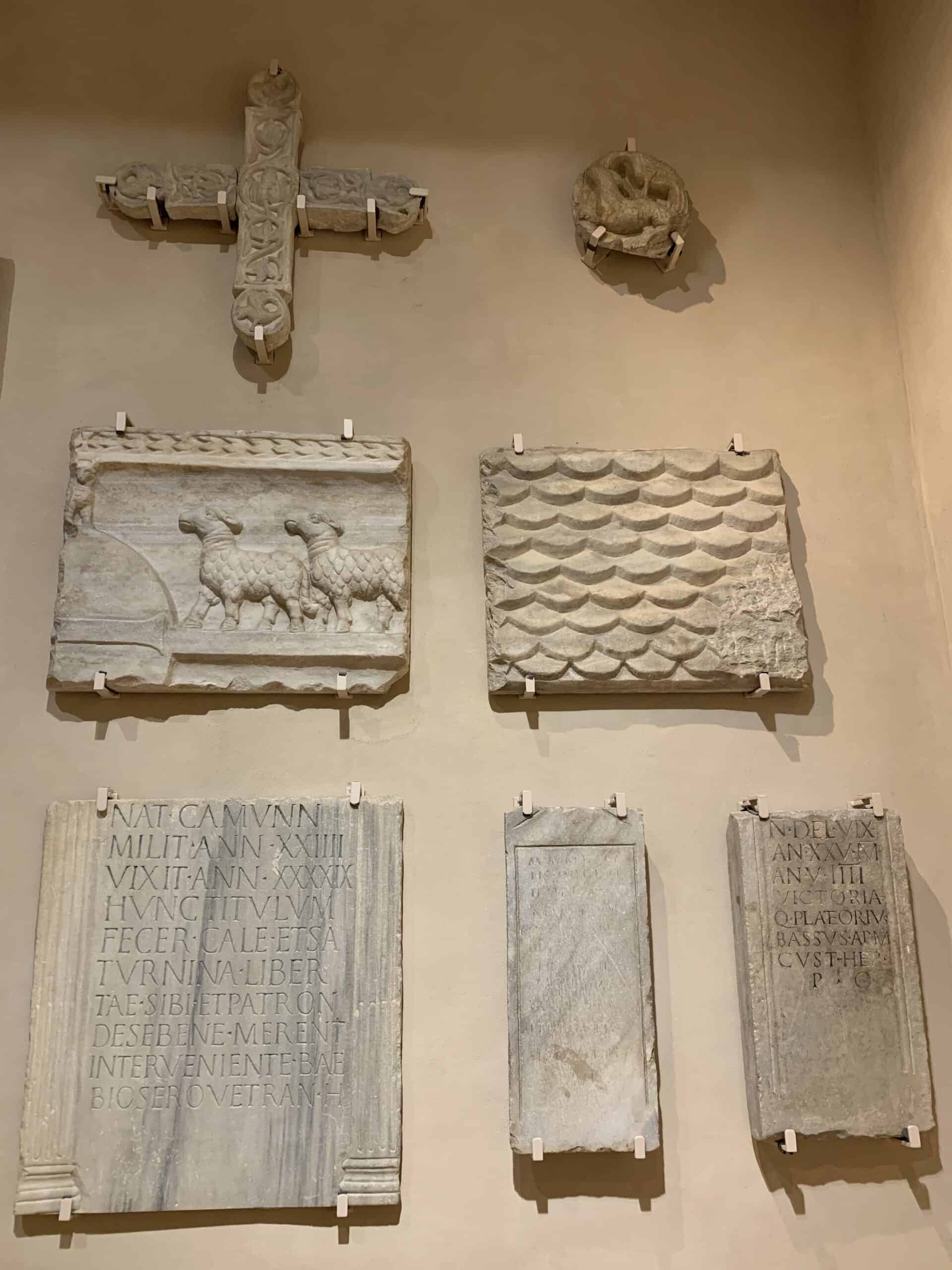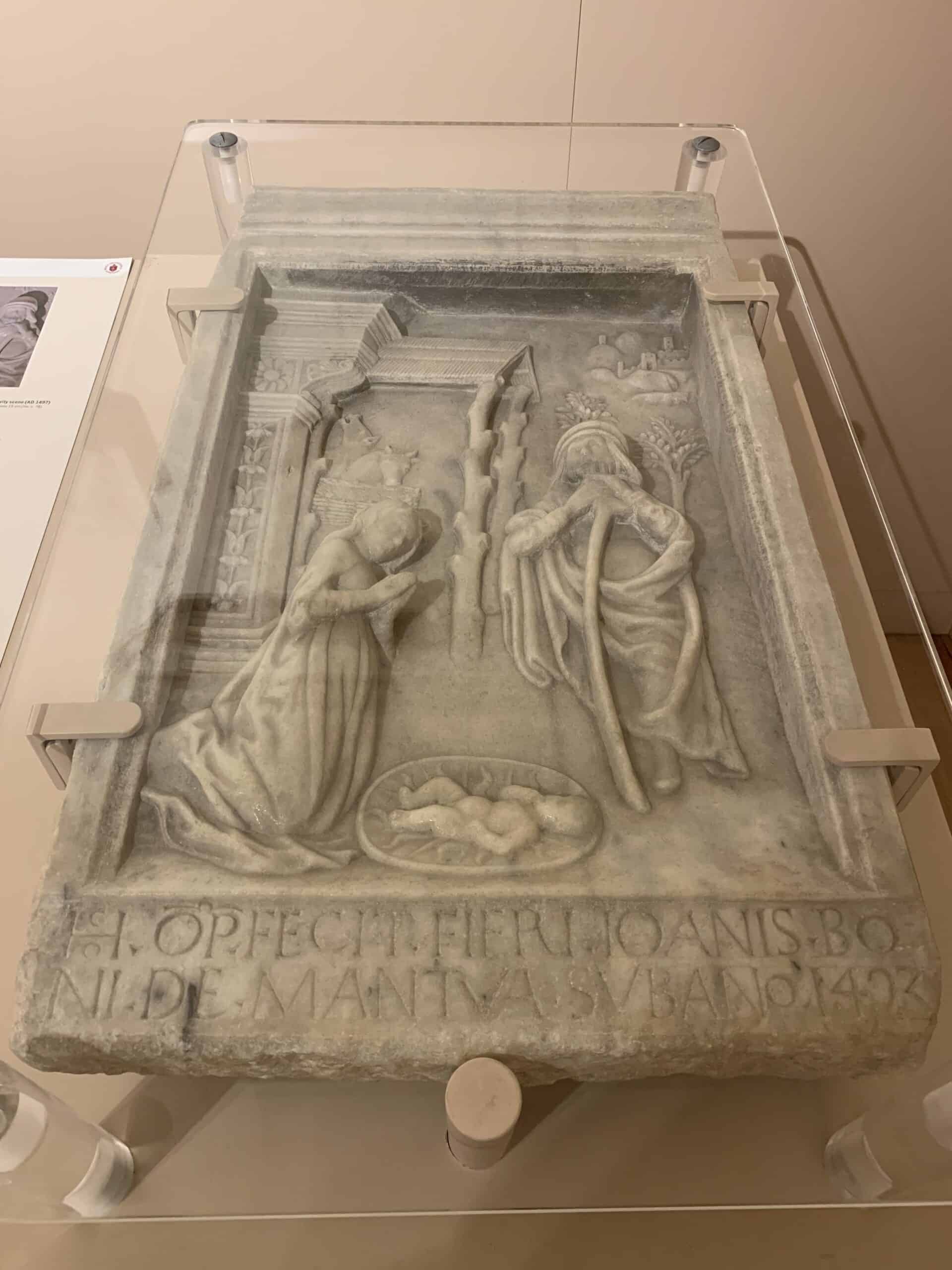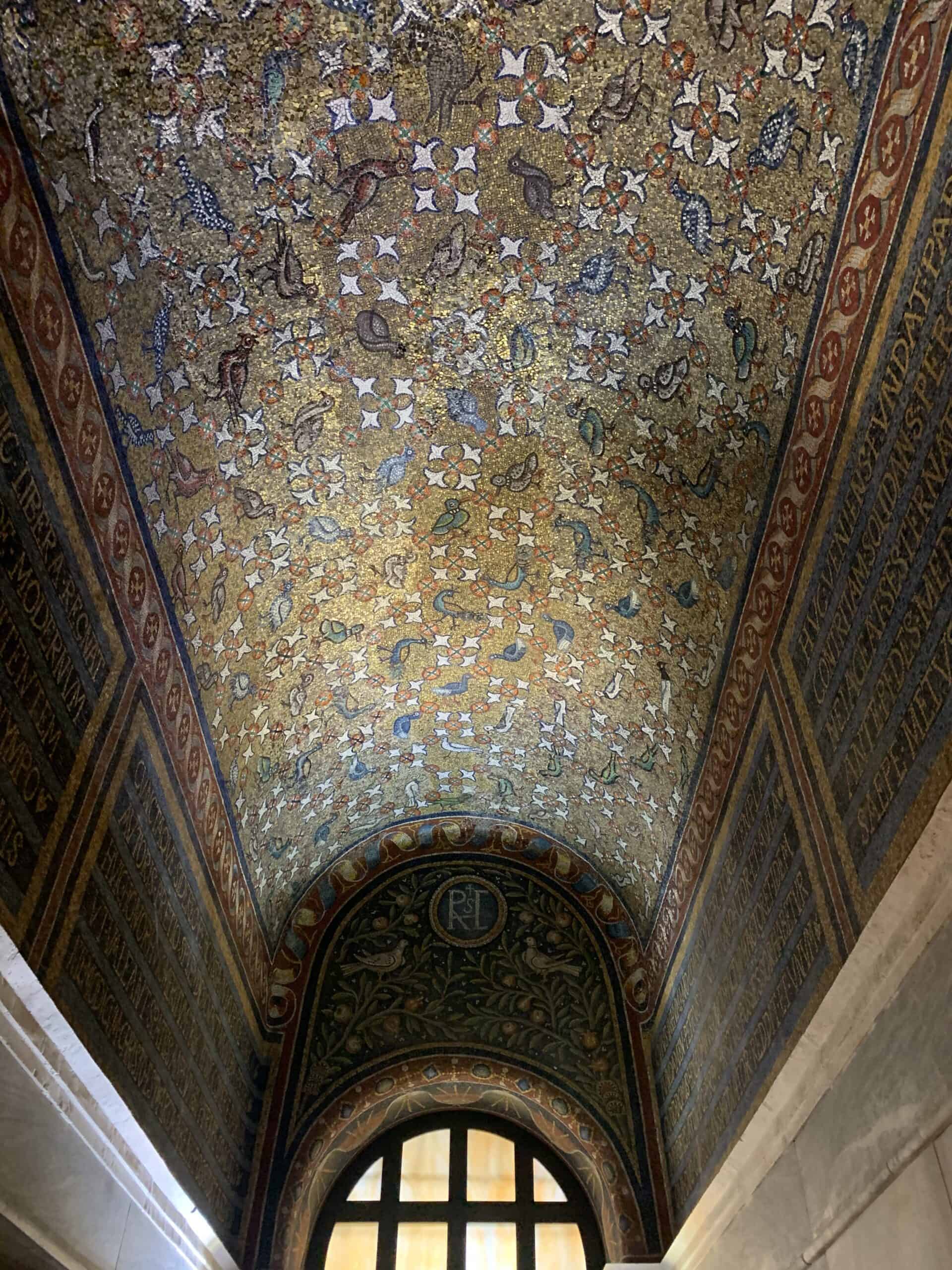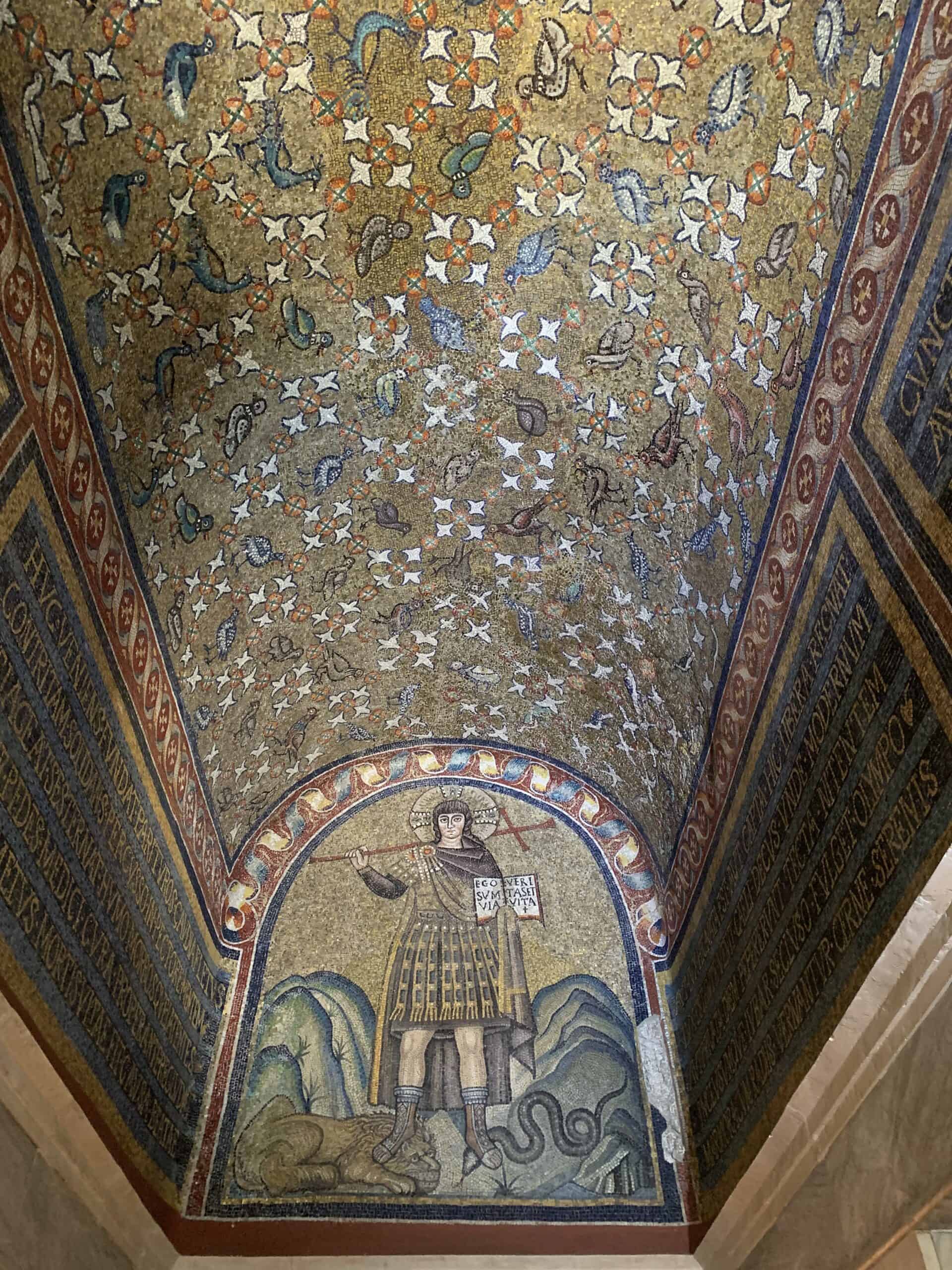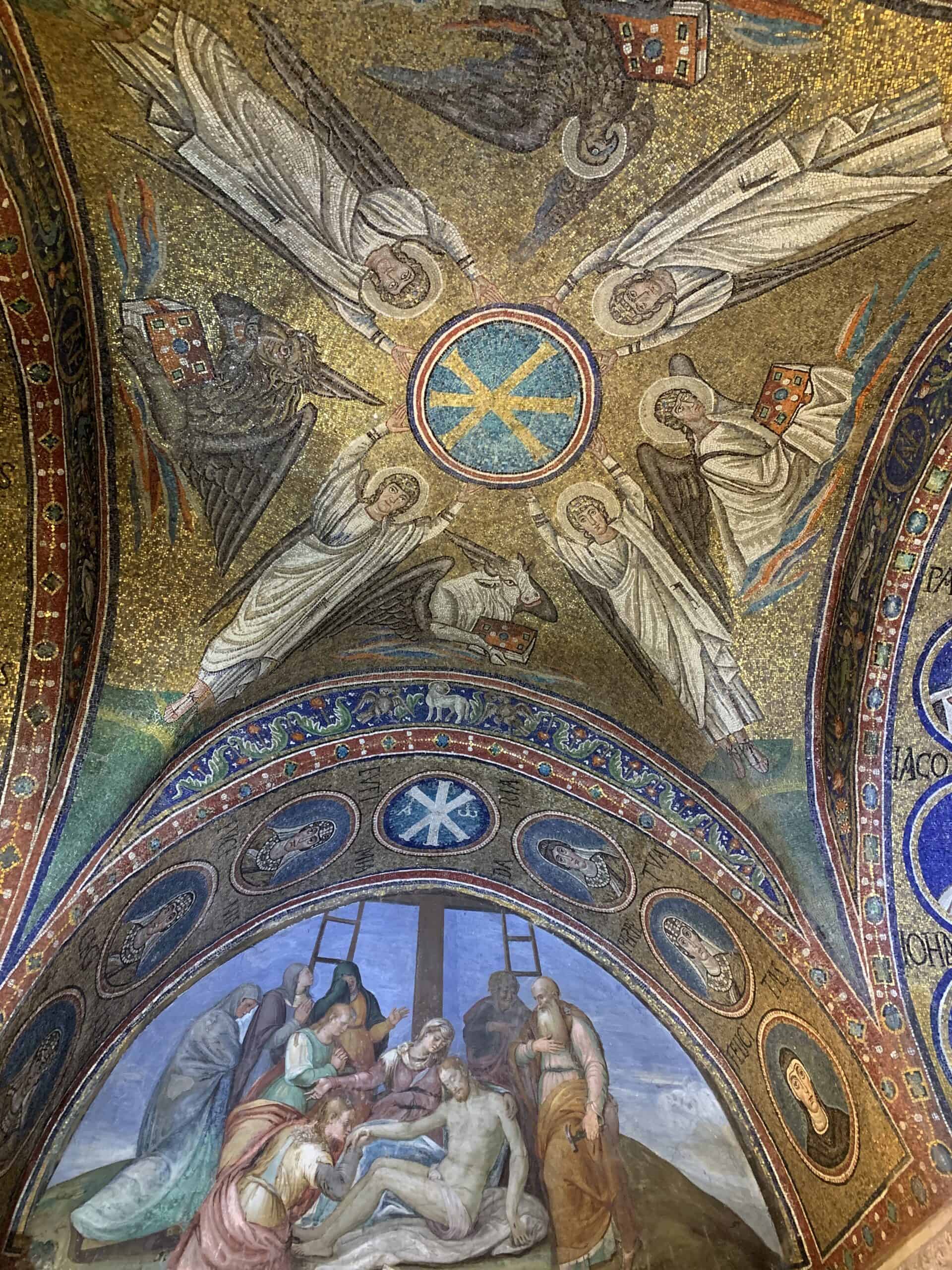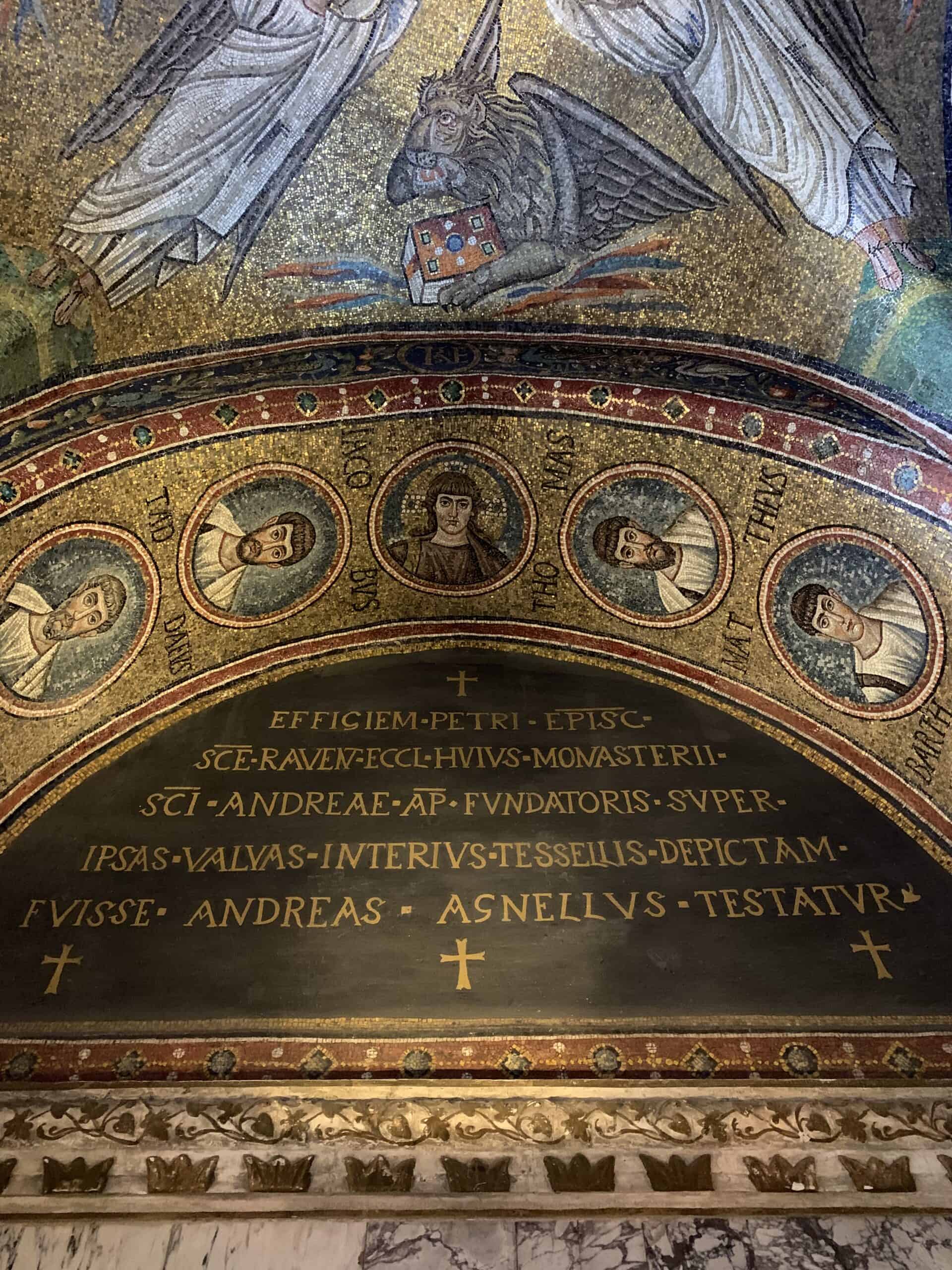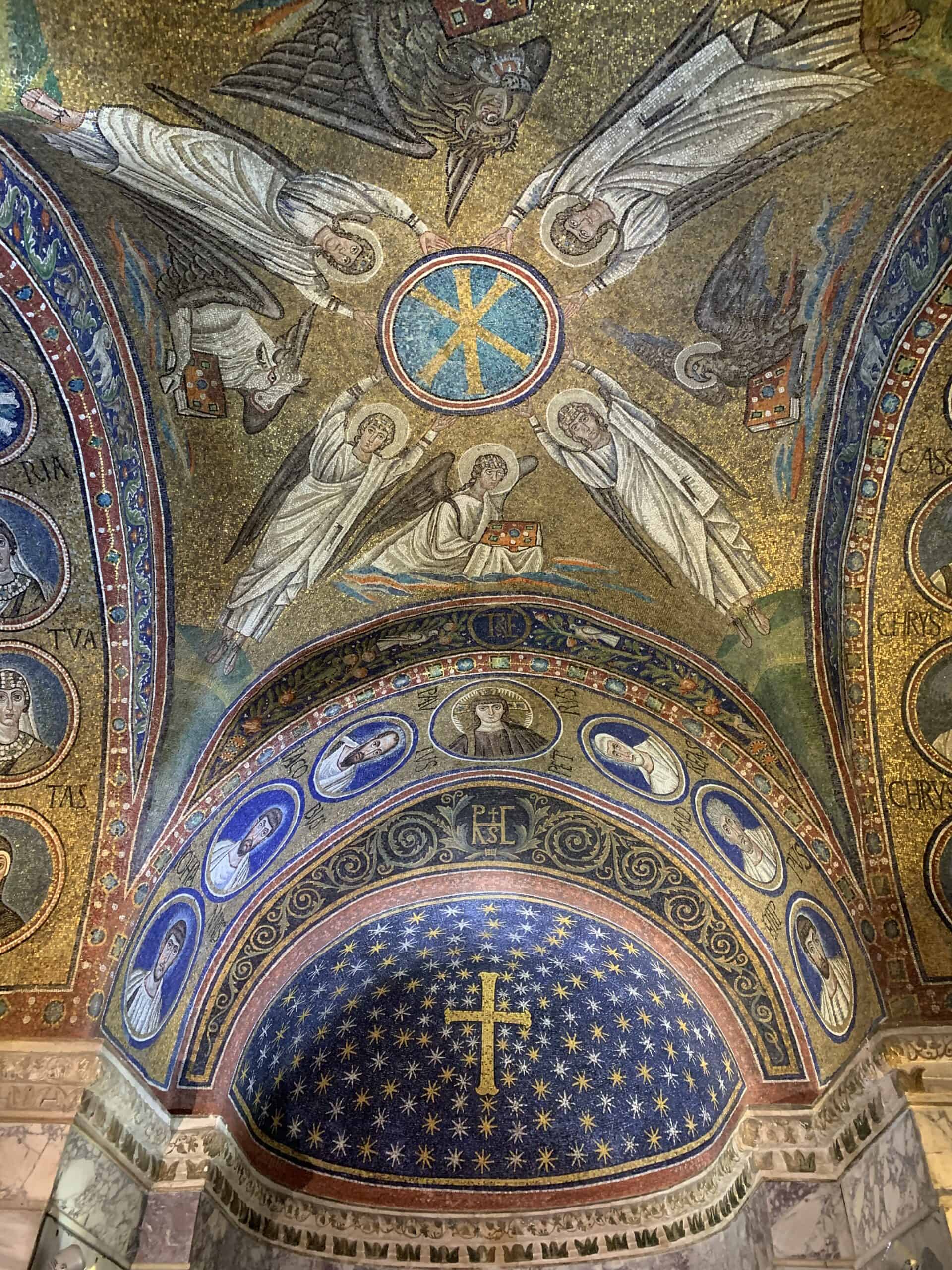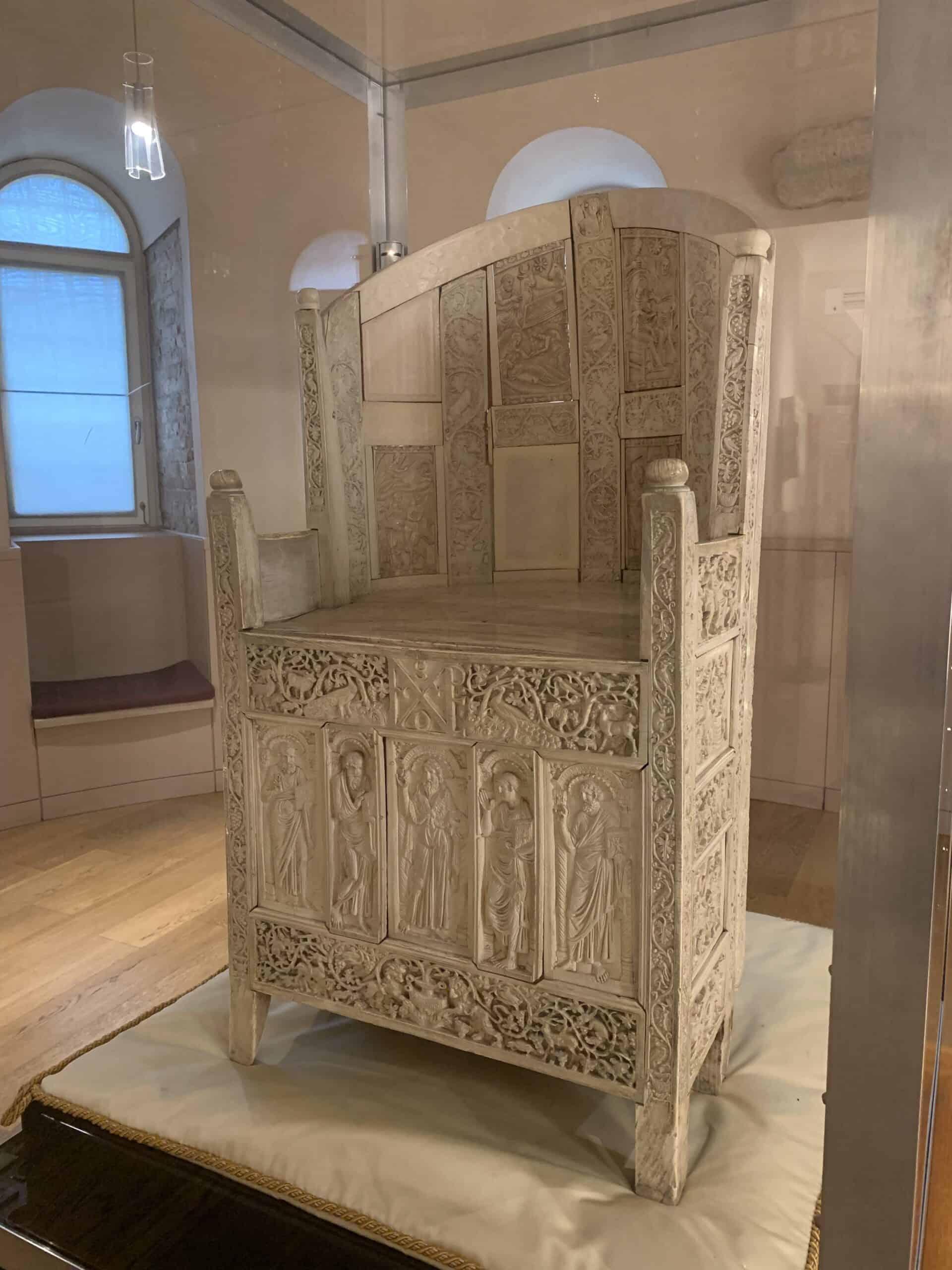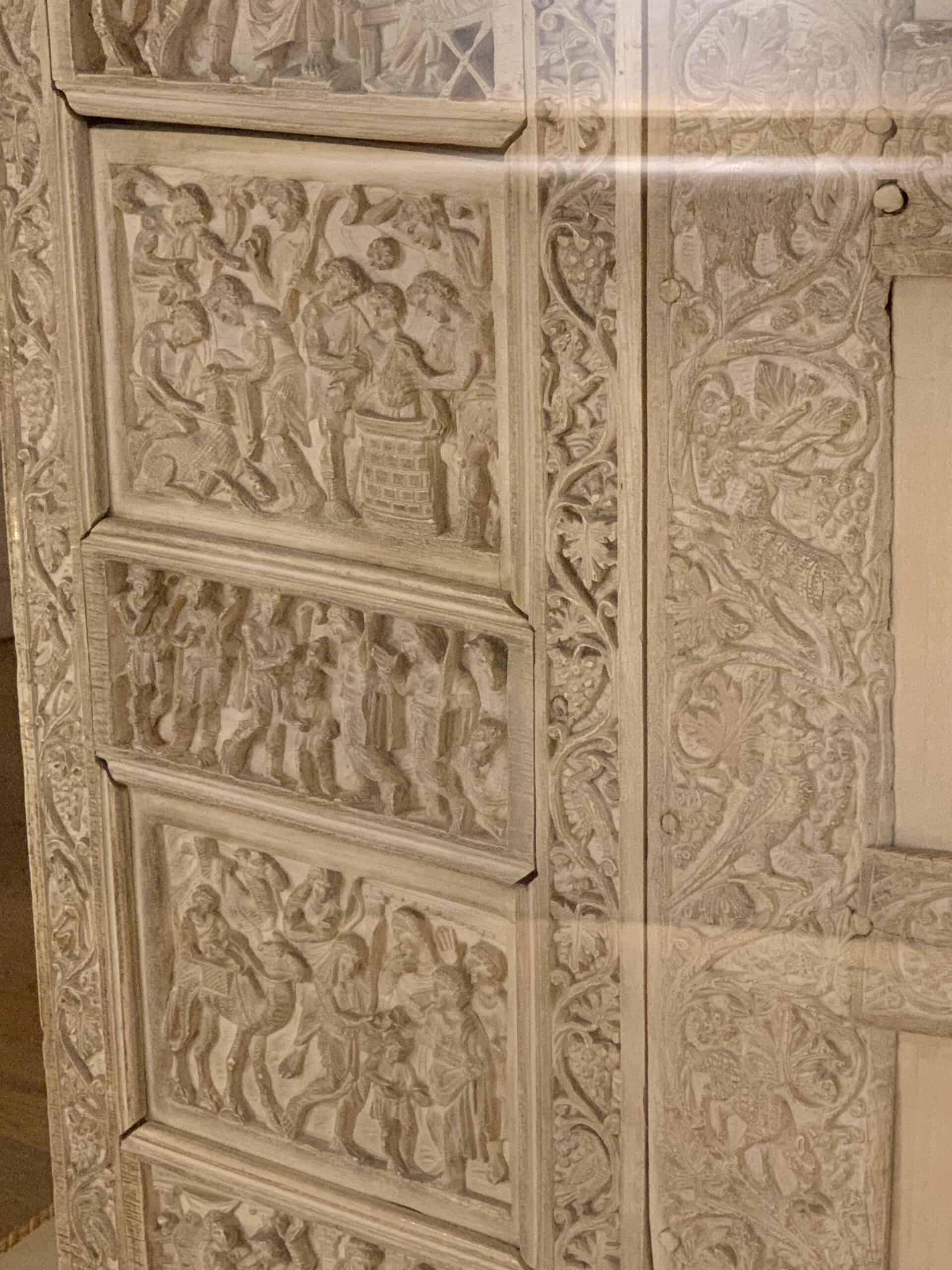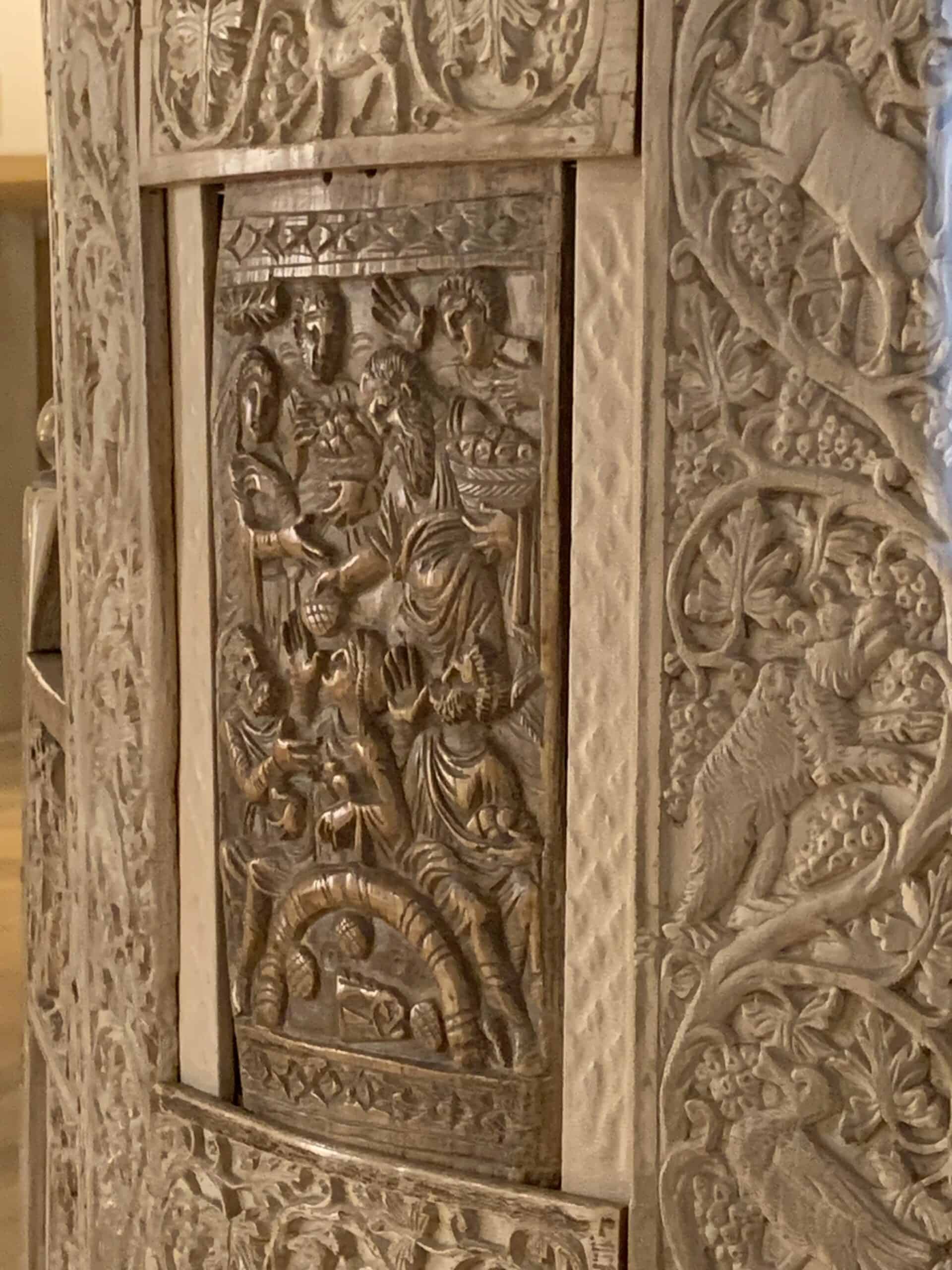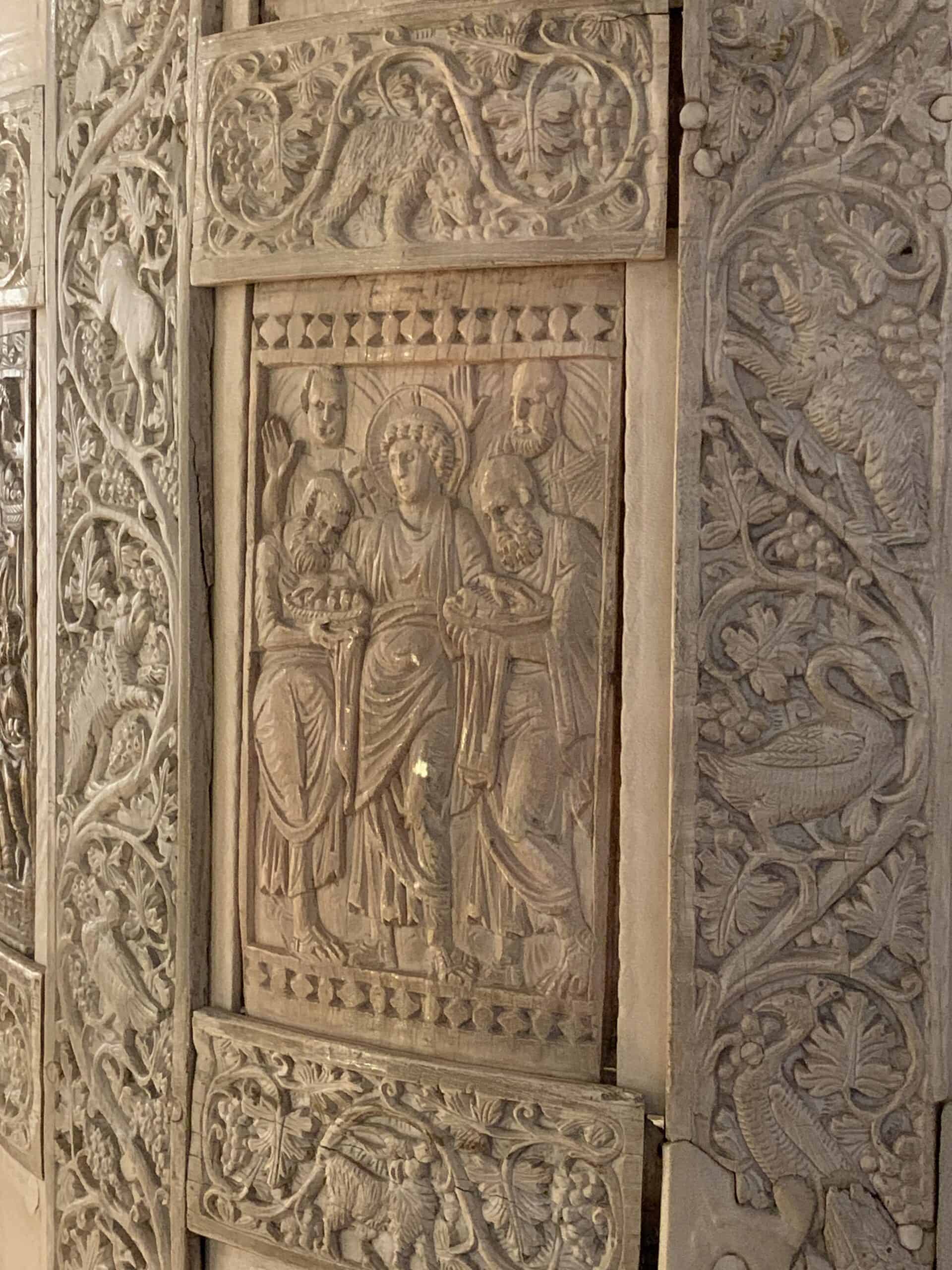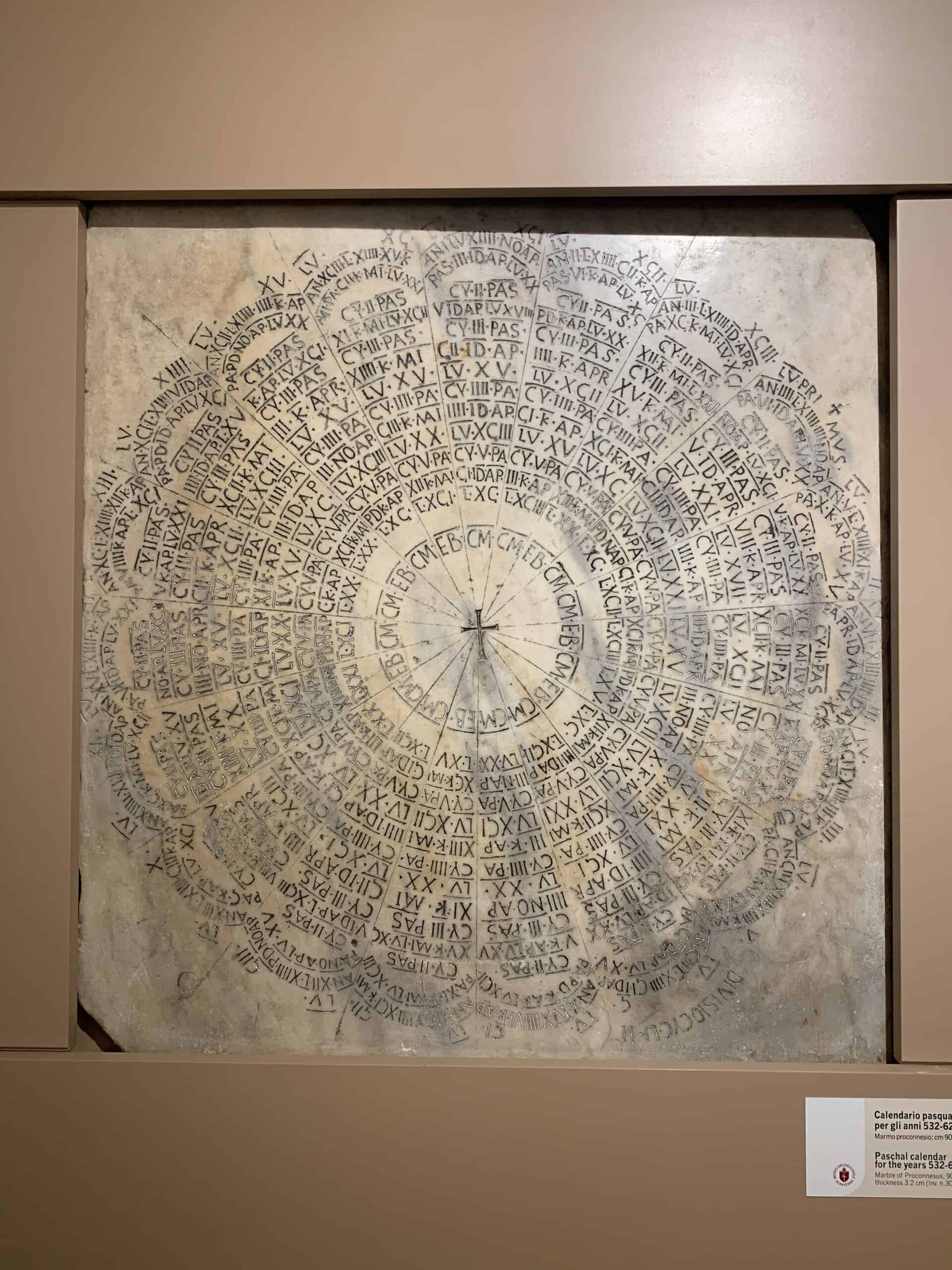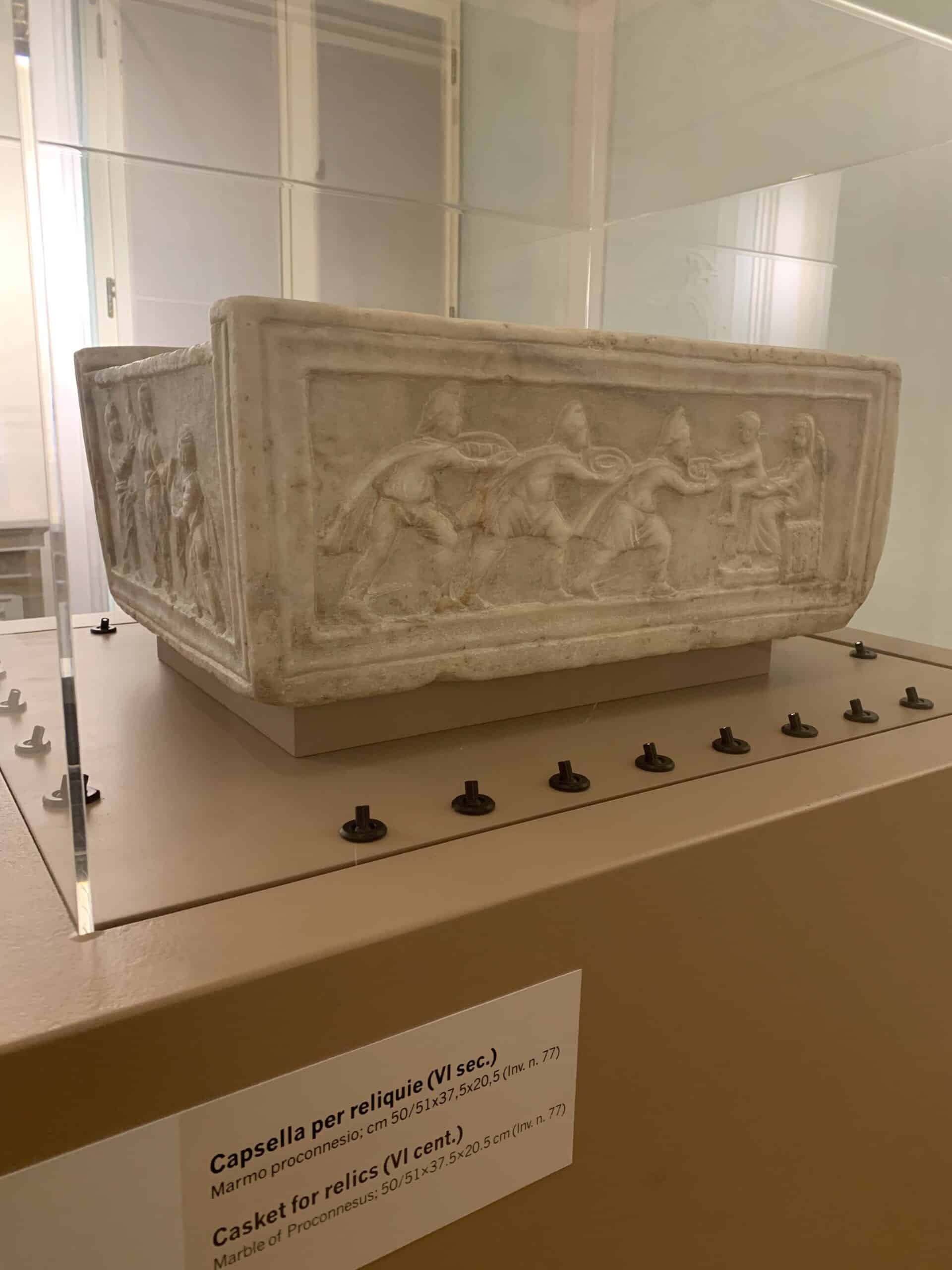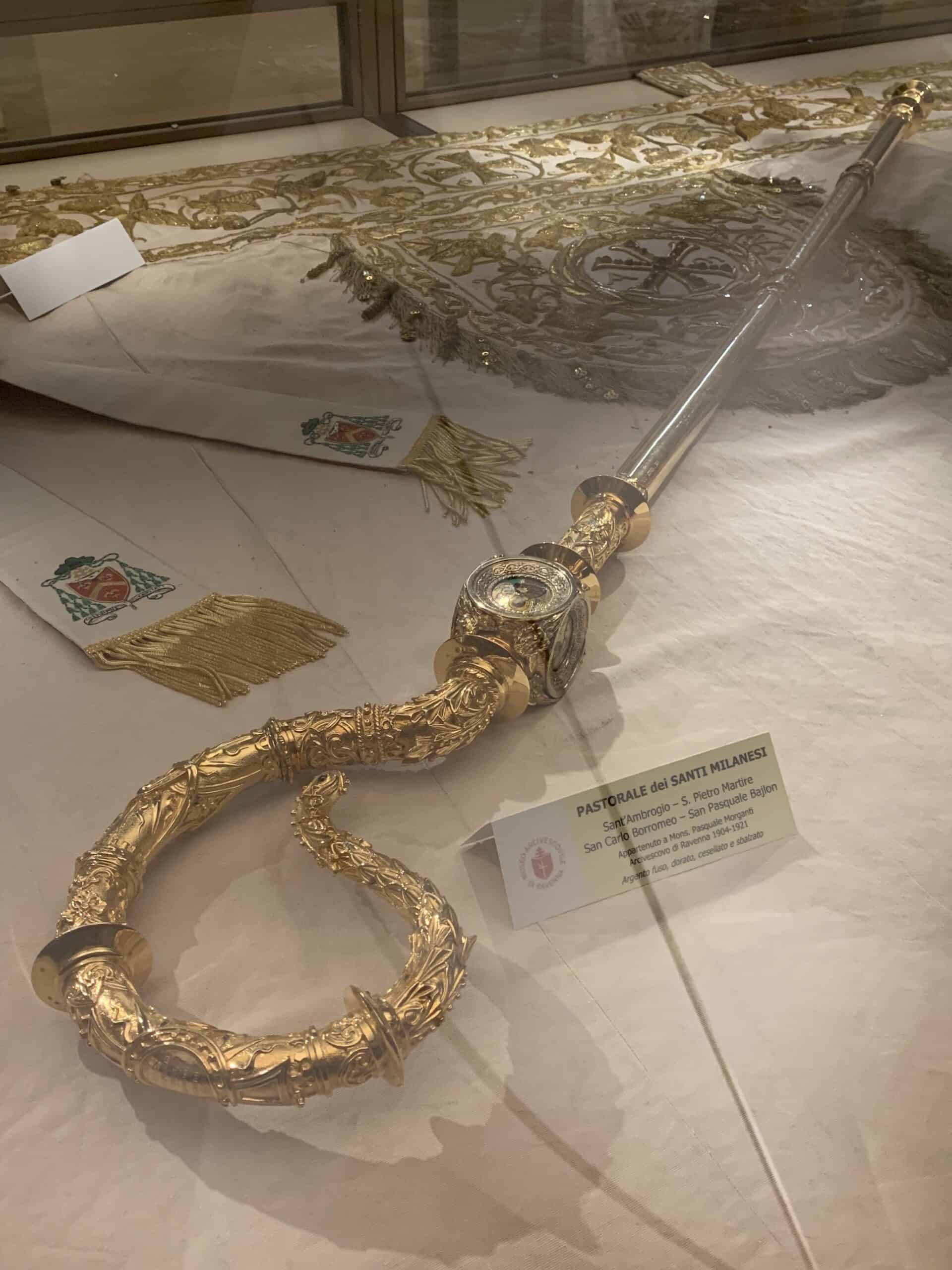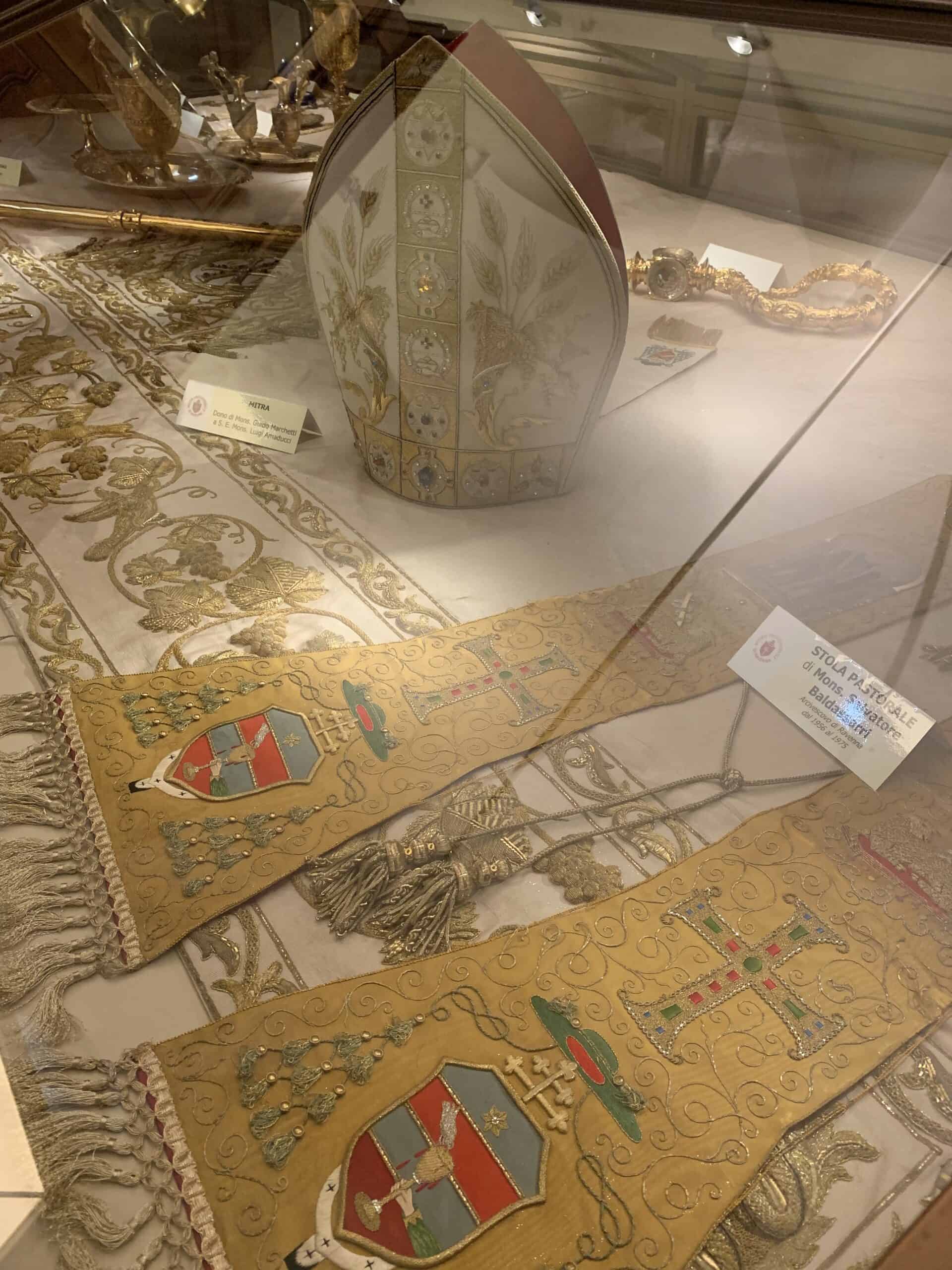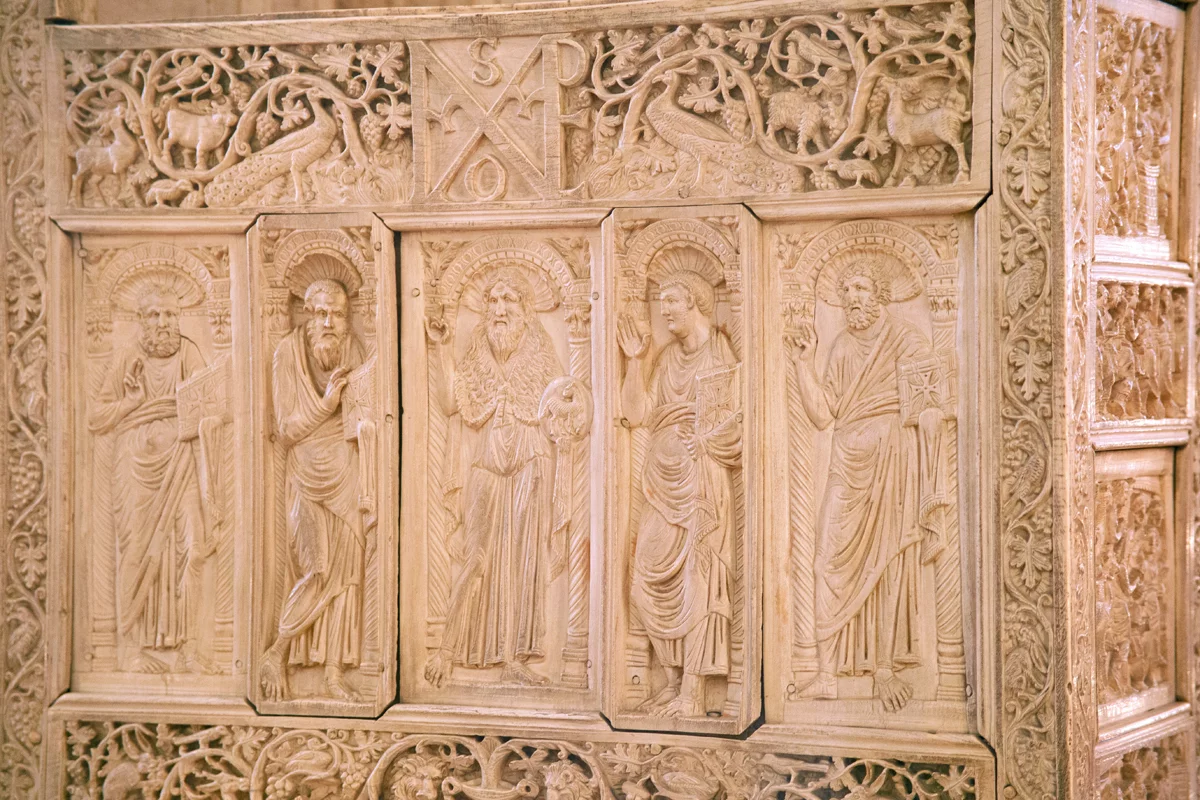
The Archiepiscopal Museum of Ravenna, one of the most evocative ecclesiastical museums in Italy, is located in the Archbishop’s Palace of the fourth century, built when the city was establishing itself as the fulcrum and capital of the Western Roman Empire.
The Museum chronologically collects the history of the city and preserves the materials from the ancient Ursina cathedral (IV century), destroyed in the eighteenth century.
During the exhibition there are numerous archaeological finds and works of art, but the most important are the Lapidary Hall, the Chapel of Sant’Andrea, the Ivory Chair of Archbishop Maximian and the Easter Calendar in marble.
In the Lapidary Hall, as the Museum was originally called, there are Roman tombstones, sculptures, capitals and fronts of sarcophagi.
The Archiepiscopal Chapel or St. Andrew’s, was built in the early fifth century and is the only Orthodox monument still existing in the city built at the time of Theodoric. Originally dedicated to Christ, following the conquest of the city by the Byzantines, the Chapel was dedicated to St. Andrew, whose relics arrived in Ravenna from Constantinople in the mid-sixth century.
At the center of the dedicated room, there is the Chair of ivory of Archbishop Maximian of the sixth century. Built in ebony, 27 rectangular panels in finely carved ivory are applied.
The ivory tablets represent scenes inspired by episodes from the Old and New Testaments.
The Chair of Ivory is the most famous and important work of the Archiepiscopal Museum of Ravenna.
In another room of the Museum there is the Easter Calendar, one of the rarest and most significant pieces. Obtained by engraving a marble slab, it was made to identify the date of celebration of Easter from the year 532 until 626. The importance of a precise calculation was fundamental for the Catholic Church and the marble table is the oldest demonstration of this.
The tour ends with the art gallery with works dated between 1500 and 1800 and a collection of sacred vestments of the eleventh century.
I thank the Opera Religion of the Diocese of Ravenna for its hospitality and availability.

